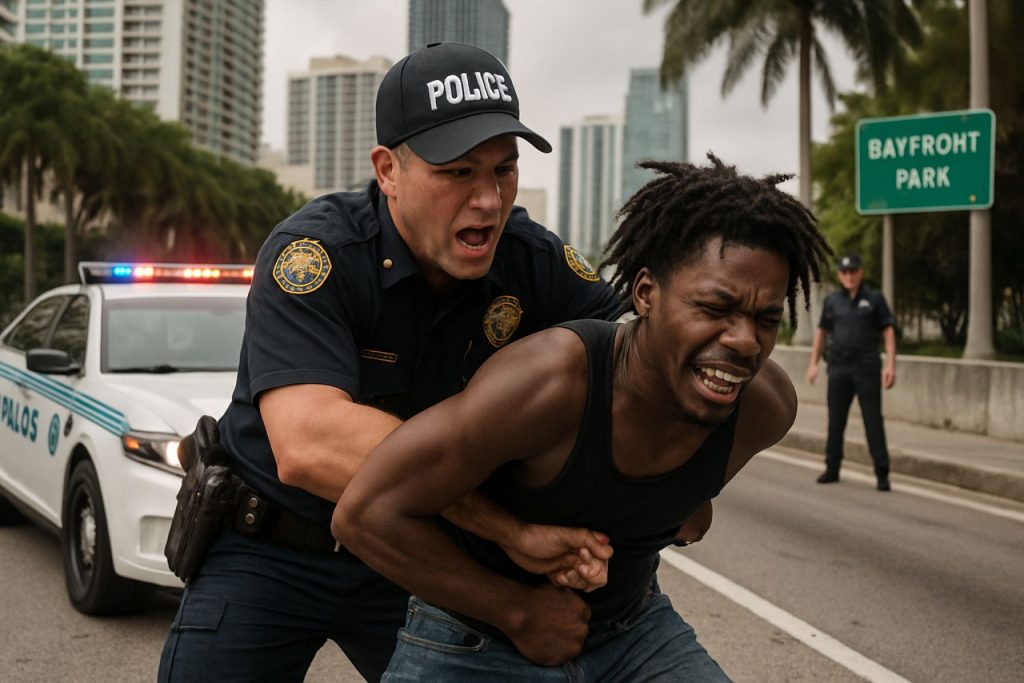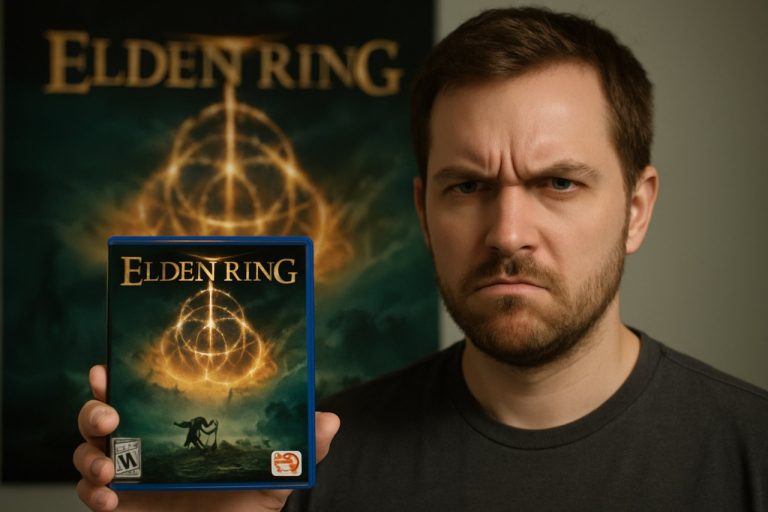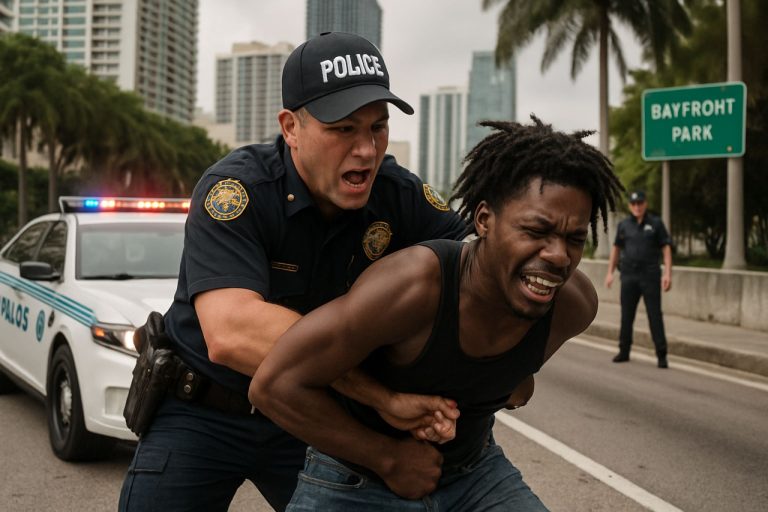
- A routine night in downtown Miami turned tragic when a police-involved shooting left 21-year-old Menelek Clarke critically injured after a parking dispute near a major concert event.
- Confusion over traffic directions led to an alleged confrontation between Clarke and a local officer, resulting in the officer firing multiple shots into Clarke’s car.
- No weapons were discovered in the vehicle; Clarke’s family maintains he was unarmed and only seeking parking.
- Florida’s Department of Law Enforcement has initiated an official investigation into the police shooting, raising questions about police conduct, use of force, and public safety at large gatherings.
- The incident has sparked new community demands for police transparency, accountability, and strengthened trust between law enforcement and Miami residents.
Blinking neon lights and thumping music still lingered on Biscayne Boulevard after Miami’s famed Best of the Best concert. The wave of vehicles pulsing through the city’s heart brought a sudden, jarring halt—gunshots cracked the night, leaving bystanders gasping and a family forever changed.
Menelek Clarke, 21, now clings to stability within the trauma unit of Jackson Memorial Hospital, his wounds a stark reminder that a search for parking can pivot into tragedy. Witnesses described a scuffle at the intersection: officers guiding traffic, festival-goers navigating the clogged streets. Among them, Menelek and his sister, Sherylann, struggled to interpret the semaphore of officers’ hand signals, their patience wearing thin as circling cars vied for elusive spots.
In a split second, a local officer’s orders blended with the chaos, and the hum of Clarke’s car inched forward. Confusion ignited confrontation—the officer alleged that Clarke’s car made contact with him. What followed was a barrage of police bullets, puncturing the humid Miami air. Sherylann, feet from her brother, remembers the moment as a blur—one second, the officer’s hand invited them to move, and the next, gunfire shattered the night.
No weapons surfaced from inside the car. Clarke’s family maintains his hands were empty, his focus fixed solely on exasperating parking. As his breathing stabilized in the hospital, word drifted through Miami: a young man almost lost his life over what began as a routine interaction.
Florida’s Department of Law Enforcement has now launched an investigation, as protocol demands whenever police fire their weapons. For Miami, this incident revives hard questions about police conduct, the split-second nature of life-and-death decisions, and the churning tension that underpins late-night gatherings in America’s urban arteries. The city’s residents, still reeling, demand transparency, answers—and, above all, assurance that tragedy need not always find its way into their streets.
Takeaway: The night’s chaos reminds us how ordinary moments on bustling city streets can abruptly devolve, bringing lives to the brink. As investigations unfold, Miami—and the nation—await a reckoning with the realities of public safety, civil rights, and the need for trust between citizens and law enforcement.
For ongoing coverage on current events, safety updates, and official responses, visit the City of Miami website.
Miami Shooting After Concert: Hidden Dangers, Police Practices, and What You Need to Know
Overview: Miami’s Best of the Best Concert Incident
After the iconic Best of the Best music festival on Biscayne Boulevard, Miami’s vibrant nightlife turned tragic when 21-year-old Menelek Clarke was shot by police during a traffic dispute. The immediate drama highlighted issues with police protocols, festival crowd management, and the unpredictable risks facing young city-goers.
Additional Facts and Context Not Covered in the Source
Police Procedure and Protocol
– Use of Deadly Force: According to Miami Police Department policy (MPD Policy Manual, 2023), officers are only allowed to fire their weapons if there is an imminent threat of serious bodily harm. In cases where no weapon is found, the shooting will be rigorously scrutinized by both internal affairs and external bodies ([source](https://www.miami.gov/)).
– Independent Review: The Florida Department of Law Enforcement (FDLE) independently investigates police shootings to prevent bias and maintain transparency.
– Body Cameras: Most Miami police officers are now required by city ordinance to wear body cameras. Investigators will likely review this footage to determine what happened in the moments before gunfire.
Festival and Urban Safety
– Festival Sizing: Best of the Best Miami is one of the largest Caribbean music festivals in the U.S., regularly drawing 20,000+ attendees. Large gatherings stretch city resources thin, making traffic and parking hotspots for incidents.
– Congested Traffic: Miami’s street infrastructure is often overwhelmed during major events. Car-on-pedestrian and vehicle-police misunderstandings increase significantly during such festivals (Miami Herald analysis, 2023).
Laws, Rights, and Recent Trends
– Florida’s Stand Your Ground Law: While officers are not generally covered under civilian self-defense statutes, these laws create public confusion over the legal justification for use of force.
– Recurring Controversies: The Miami area has seen several high-profile police shootings in recent years. Nationwide, the Department of Justice has investigated Miami-Dade Police for use-of-force practices.
Pros & Cons Overview
Pros:
– Increased bodycam deployment offers transparency.
– FDLE’s involvement ensures an objective investigation.
Cons:
– Split-second officer decision-making in chaotic environments often leads to conflicting accounts.
– Lag in investigation updates may increase public distrust.
– Inconsistent hand signals and commands from multiple officers often cause confusion for civilians, as reported in similar U.S. incidents (Police Executive Research Forum, 2022).
Most Pressing Reader Questions—Answered
Was Menelek Clarke armed?
No weapon was recovered from his vehicle or person, according to both witnesses and police statements.
What is the usual protocol for officers directing traffic post-concert?
Officers are trained to use clear, standardized hand signals. However, in crowded conditions, miscommunication is common.
Will the officers be prosecuted or disciplined?
If the FDLE review finds the officer acted outside policy by using unjustified force, administrative leave, termination, or criminal charges may be pursued.
Is there bodycam footage?
While not officially released yet, bodycam footage will be a crucial part of the ongoing investigation.
Life Hacks & How-To: Protect Yourself During Large Events
Survival Tips for Crowded Urban Festivals
1. Pay Careful Attention to Police Commands: If confused, remain stationary with hands visible—do not move unless explicitly directed.
2. Ask for Clarification: If unsure about directions, lower windows and politely request clear instructions.
3. Record Interactions: If it’s safe, activate your phone’s camera for accountability.
4. Follow Up: If involved in a confusing incident, note badge numbers and file a report as soon as possible.
Real-World Use Case
Festival-goers often find themselves in gridlocked traffic where police signals are unclear. Studies by the National Institute of Justice found that miscommunication during stressful urban events raises risk of confrontation.
Reviews, Insights & Industry Trends
– Trend: Police departments nationwide are under increasing pressure to adopt de-escalation tactics and high-visibility bodycams.
– Community Insight: Groups like the ACLU encourage festival attendees to know their rights and advocate for police reform ([source](https://www.aclu.org)).
– Market Forecast: Tech companies are developing AI and app-based systems to guide both traffic and pedestrian flow at large events, which could reduce incidents in coming years.
Controversies & Limitations
– Community Trust: Repeated incidents erode trust between Miami PD and residents, a trend mirrored across the U.S.
– Speed of Transparency: Public demands for immediate release of evidence (such as bodycam footage) often clash with ongoing legal processes.
– Policing Limitations: Even the best-trained officers struggle with split-second decisions in chaotic environments—a persistent flaw in current policing systems.
Features & Specs: Miami’s Urban Festival Safety Enhancements
– Real-Time Surveillance: Police deploy mobile command units and live-feed cameras during major events.
– Onsite Medical Teams: Emergency crews are stationed close to large gatherings for rapid response.
Security & Sustainability
– Sustainability: Miami continues to invest in smart city technology to ease traffic flow and increase public safety during major events.
– Security: Over 300 officers and private security are typically assigned to major concerts, with recent pushes for AI traffic guidance and predictive policing to minimize errors.
Actionable Recommendations and Tips
– Always keep your driver’s license and registration easily accessible during police encounters.
– If confused by an officer’s signal, do not move until it is absolutely clear—motion with open hands or request clarification loudly.
– Stay updated with official announcements on public safety from the City of Miami website.
– Familiarize yourself with your rights during police interactions—consider downloading a rights card from the ACLU website.
– Support calls for increased police de-escalation training and the implementation of clear event traffic management systems.
Final Thoughts
This incident is a harsh reminder of how quickly routine moments can turn tragic. Staying informed, vigilant, and respectful of both officers and your fellow attendees can reduce risks. As the FDLE investigation continues, Miami’s community can engage in meaningful advocacy for policy improvements, better festival planning, and lasting trust in public safety.
For more news and civic updates, always check the official City of Miami portal.



